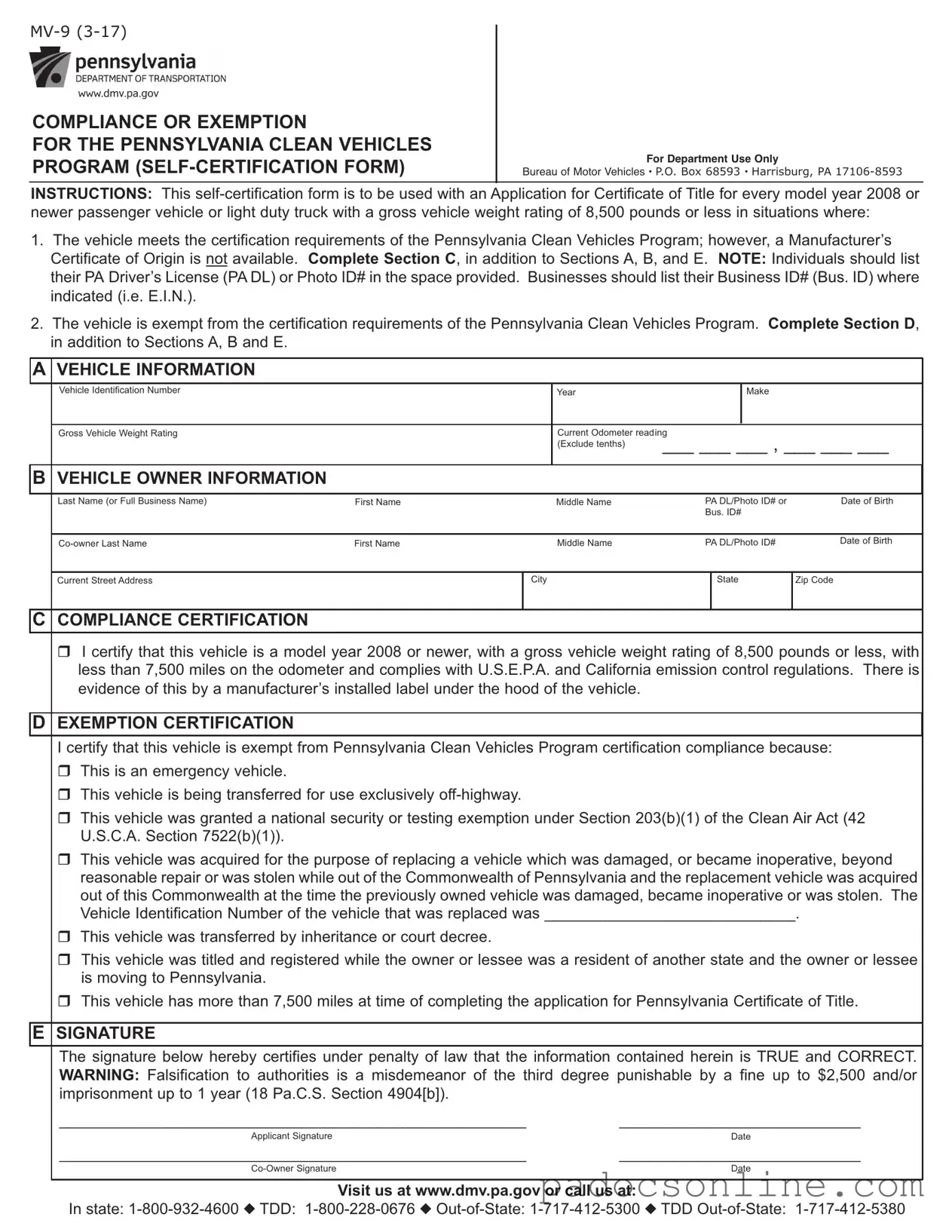Filling out the Pennsylvania MV-9 form can be straightforward, but there are common mistakes that people often make. One frequent error is failing to include the correct vehicle identification number (VIN). The VIN is a unique identifier for the vehicle, and any mistakes in this number can lead to delays or complications in processing the application. It is crucial to double-check this information to ensure it matches the VIN on the vehicle itself.
Another common mistake involves providing incorrect or incomplete personal information. Applicants should ensure that their names, addresses, and identification numbers are accurate. For individuals, this means including the Pennsylvania Driver’s License or Photo ID number. For businesses, the Business ID number must be provided. Omitting any of this information can result in the form being returned or rejected.
Many people also overlook the requirement to complete the correct sections of the form based on their vehicle's status. For instance, if the vehicle qualifies for certification under the Pennsylvania Clean Vehicles Program, Sections A, B, and C must be filled out. Conversely, if the vehicle is exempt, Sections A, B, and D should be completed instead. Confusion in this area can lead to significant processing delays.
Additionally, some applicants forget to sign and date the form. The signature is a critical part of the application, certifying that the information provided is true and correct. Without a signature, the application cannot be processed. It is advisable to review the form before submission to ensure that all required signatures are included.
Another mistake is neglecting to check the odometer reading. The current odometer reading must be reported accurately, excluding tenths of a mile. Providing an incorrect reading can lead to questions about the vehicle's compliance with program requirements. This detail is essential for confirming the vehicle's eligibility.
Lastly, applicants sometimes fail to read the instructions thoroughly. Each section of the MV-9 form has specific requirements and instructions. Not understanding these can lead to errors in filling out the form. Taking the time to read and follow the instructions can help avoid unnecessary mistakes and ensure a smoother application process.
